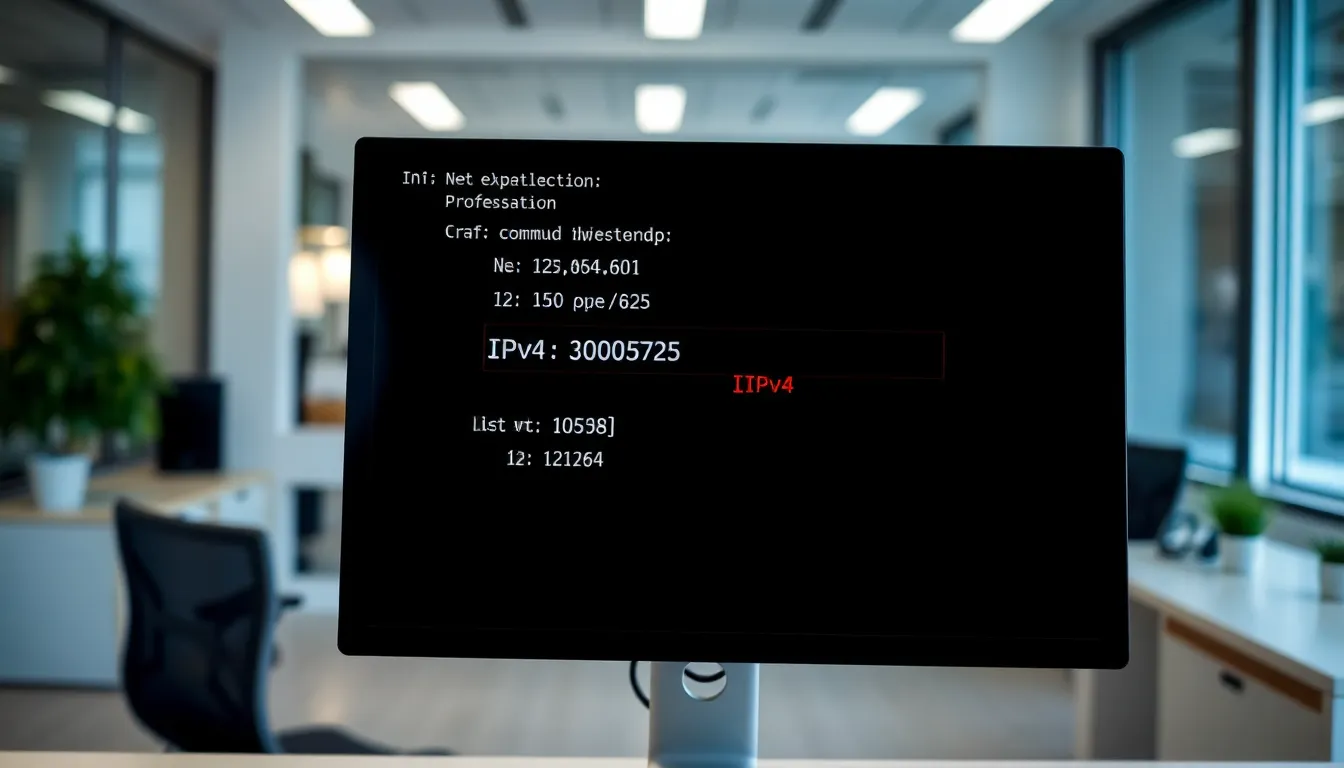Ever wondered what your IPv4 address is? It’s like your home address but for your devices on the internet. Just as you wouldn’t want strangers knocking on your door, knowing your IPv4 address helps you understand how your device interacts with the vast digital world.
In a world where everything is connected, your IPv4 address plays a crucial role in ensuring smooth communication online. Whether you’re streaming cat videos or working from home, it’s the unsung hero behind the scenes. So, let’s dive into the quirky world of IP addresses and uncover the mystery of your very own IPv4 address—because who doesn’t want a little more clarity in their online life?
Table of Contents
ToggleUnderstanding IP Addresses
IP addresses serve as unique identifiers for devices on the internet. They allow for seamless communication between computers, servers, and other devices.
What Is an IP Address?
An IP address is a string of numbers identifying a device on a network. Typically expressed in a format such as 192.168.1.1, this numerical label ensures routing packets of data to the correct destination. Each device in a network must have a distinct IP address to avoid confusion during data transmission. Understanding one’s IP address enhances awareness of how devices connect and interact within the internet ecosystem.
Types of IP Addresses
Three main types of IP addresses exist: public, private, and static. Public IP addresses connect devices directly to the internet, while private IP addresses are used within local networks, ensuring security and isolation. Static addresses remain constant over time, offering reliable connectivity. DHCP dynamically assigns temporary IP addresses, which can change each time a device connects. Knowing about these types aids in effective network management and device communication.
What Is My IPv4 Address?

An IPv4 address serves as a crucial identifier for devices connected to the internet. It consists of a series of numerical labels that enable effective communication online.
Definition of IPv4
IPv4 stands for Internet Protocol version 4. This protocol is the most widely used, consisting of a 32-bit numeric address expressed as four decimal numbers separated by periods, such as 192.168.1.1. Each number ranges from 0 to 255. The limited number of available combinations in IPv4 led to the development of IPv6, intended to accommodate more devices. Despite the advent of IPv6, many networks still rely on IPv4 due to its simplicity and established presence.
How to Find Your IPv4 Address
Finding an IPv4 address can be achieved through several methods. One simple way is to access the command prompt on Windows by typing cmd in the search bar. Once the command prompt opens, entering ipconfig reveals detailed network information, including the IPv4 address listed under the corresponding network adapter. On MacOS, users can navigate to System Preferences, select Network, and find their IPv4 address in the Status section. Additionally, online services like WhatIsMyIP.com instantly display your public IPv4 address.
Importance of Knowing Your IPv4 Address
Knowing your IPv4 address plays a key role in network functionality and online activities. It provides crucial identification for a device within a network.
Network Configuration
Effective network configuration depends on accurately identifying your IPv4 address. This identification helps to set up routers and firewalls correctly. A specific IPv4 address ensures devices connect seamlessly to the network without conflicts. Knowing this address makes assigning static IPs straightforward, enhancing network security. Network administrators often require this information to manage and monitor device connections effectively.
Troubleshooting Connection Issues
Connection issues often stem from misconfigured IPv4 addresses. Recognizing your IPv4 address aids in diagnosing common problems such as network conflicts. Many users experience connectivity problems when multiple devices share the same IP address. Identifying the correct IPv4 address helps resolve these conflicts quickly. In addition, knowing this address allows for more efficient troubleshooting when connecting to the internet.
Tools for Checking Your IPv4 Address
Various tools simplify the process of checking an IPv4 address, enhancing understanding of network configurations and online presence.
Online IP Lookup Services
Online IP lookup services offer quick access to your public IPv4 address. Websites such as WhatIsMyIP.com and IPChicken.com allow users to find their IP address instantly. These services display the IPv4 address at the top of the page, making it straightforward to identify. Many sites also provide additional information, like the geographical location associated with the IP address. Users simply navigate to these sites using a web browser to find the needed details.
Command Line Tools
Command line tools provide a more technical approach to finding an IPv4 address. On Windows, the Command Prompt allows users to enter the command ipconfig, which displays network configurations, including the IPv4 address. Unix-based systems, including MacOS and Linux, use the command ifconfig or ip a to retrieve similar information. Users look for the output labeled “IPv4 Address” for clarity. Familiarity with these tools enables advanced users to troubleshoot connection issues effectively.
Understanding your IPv4 address is essential for navigating the digital landscape. It serves as a unique identifier for devices ensuring smooth online communication. Recognizing the different types of IP addresses can enhance network management and connectivity.
Utilizing tools and methods to find your IPv4 address empowers users to troubleshoot issues effectively. Whether through command prompts or online services, knowing how to access this information can prevent conflicts and improve overall network performance.
By staying informed about IPv4 and its significance, individuals can optimize their online experiences and maintain a more efficient network environment.









